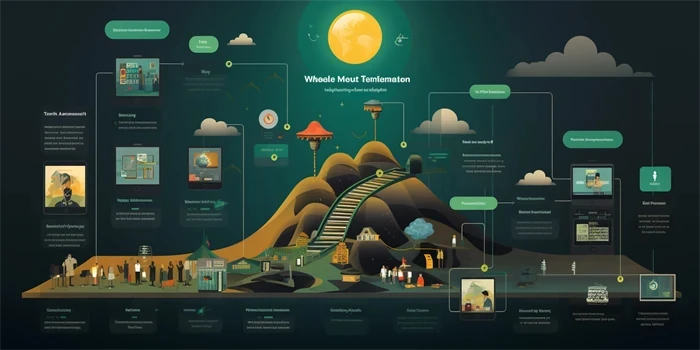YouTube has proven to be a lucrative platform for content creators, but how much money do they actually make? In this article, we will explore various factors that determine a YouTuber’s income. Please note that the figures mentioned here are approximate and can vary significantly from one individual to another.

1. Subscriber Base
The number of subscribers a YouTuber has plays a crucial role in their earnings. A larger subscriber base attracts more advertisers and sponsors, leading to higher revenue possibilities.
Their content quality and engagement with subscribers are also essential in retaining and attracting new viewers.
2. Ad Revenue
Advertisements are a primary source of income for YouTubers. Ad revenue is generated through ads shown on the videos, and YouTubers receive payment based on the number of views and ad clicks.
Certain factors, such as the viewer’s location, ad type, and industry niche, can influence the amount of money earned per view.
3. Quality and Length of Videos
Longer videos tend to have more advertisements, resulting in increased revenue potential. Additionally, producing high-quality content leads to better viewer retention and engagement, promoting ad views.
4. YouTube Partner Program (YPP)
Becoming a part of the YouTube Partner Program allows YouTubers to monetize their videos. However, the eligibility criteria for YPP have become stricter over the years, and content creators need to meet specific requirements to qualify.
Once accepted into the program, YouTubers gain access to additional revenue streams such as channel memberships, Super Chat, and YouTube Premium revenue.
5. Sponsored Content and Brand Deals
Collaborations with brands and sponsored content serve as significant sources of income for YouTubers. They can negotiate payments based on factors like their channel size, engagement rate, and reach.
However, it’s essential to strike a balance between sponsored content and maintaining authenticity to retain the trust of their audience.
6. Merchandise and Product Sales
Many YouTubers establish their merchandise lines or promote products to their audience, generating additional income. This revenue stream allows them to leverage their brand and fanbase.
Creating unique and appealing merchandise and building a loyal audience base are crucial for success in this avenue.
7. Channel Memberships
YouTubers who meet the eligibility criteria can offer perks and exclusive content to their loyal subscribers through channel memberships. This subscription model provides a recurring revenue stream.
Offering unique benefits and engaging with members through exclusive live streams and private chats can help maximize this income stream.
8. Crowdfunding
Some creators rely on crowdfunding platforms like Patreon to receive voluntary donations from their audience. This allows them to pursue projects and create content outside the constraints of ad revenue.
Building a strong connection with their audience and delivering value are crucial to encourage financial contributions.
9. Content Licensing and Syndication
YouTubers can explore opportunities to license their content to other media outlets or platforms, generating additional income. This can include syndication deals, TV networks, or licensing the content for promotional use.
Creating original and appealing content that resonates with wider audiences increases the chances of securing licensing opportunities.
10. Audience Demographics
A YouTuber’s target audience can impact their earnings. Certain demographics are more appealing to advertisers and sponsors, thus commanding higher rates per ad view or engagement.
Understanding their target audience and creating content that caters to their preferences can lead to better monetization opportunities.
11. YouTube Premium
YouTube Premium is a subscription-based service that enables users to enjoy an ad-free experience. YouTubers receive a share of the revenue generated from Premium subscribers who watch their content.
Increasing Premium viewership helps boost earnings and rewards creators for their content’s popularity among subscribers.
12. Views and Engagement Rate
The number of views a video receives, combined with high viewer engagement, is crucial for generating ad revenue and attracting sponsors. Additionally, higher engagement rates indicate a loyal and active audience, which adds value to brand partnerships.
Creating compelling content and fostering a community that actively participates in discussions contribute to better earnings.
13. Seasonal Fluctuations
Some YouTubers experience seasonal fluctuations in their income, especially if their content is tied to specific events or holidays. Advertisers may allocate more budget during festive seasons, leading to a higher income during these periods.
Understanding the seasonal trends in their niche can help creators plan and optimize their content for revenue gains.
14. Production Costs
While YouTube offers a low entry barrier, creating quality content often incurs production costs. Expenses such as equipment, editing software, and hiring additional help can impact a YouTuber’s overall income.
Optimizing production costs and efficiency is essential to maximize profitability.
15. External Sources of Income
Many successful YouTubers diversify their income streams by exploring external opportunities. This may include book deals, public speaking gigs, brand partnerships outside of YouTube, or even launching their businesses.
Broadening income sources ensures stability and financial security even if YouTube earnings fluctuate.
Conclusion
While YouTube can be a lucrative platform, the income potential varies significantly among YouTubers. Factors such as subscriber base, ad revenue, sponsored content, merchandise sales, and external income sources all contribute to a YouTuber’s overall earnings. Understanding and strategically leveraging these factors can help content creators generate a sustainable income from their YouTube endeavors.
References:
1. https://www.forbes.com/sites/jonathanponciano/2021/06/30/youtubes-top-earners-doubled-to-57-billion-in-2020-led-by-9-year-old-kid/?sh=784d0801a5aa
2. https://creatoracademy.youtube.com/page/lesson/revenue-basics#strategies-zippy-link-7
3. https://business.youtube.com/support/monetize/setup.html
About the Author:
John Smith is a digital media expert and content creator with over a decade of experience. He specializes in YouTube monetization strategies and has helped numerous creators optimize their earnings. With a passion for photography, John also captures captivating images to complement his articles.
Image by John Smith (original image)


